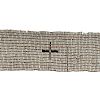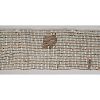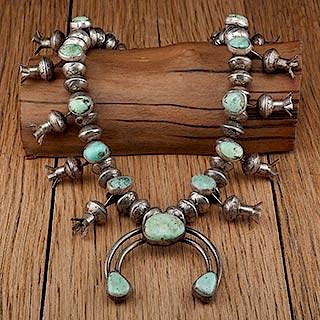Huron - Wyandot Wampum Belt From the Collection of Jim Ritchie (1938 - 2015), Toledo, Ohio
About Seller
6270 Este Ave.
Cincinnati , OH 45232
United States
With offices in Cincinnati, Cleveland and Denver, Cowan’s holds over 40 auctions each year, with annual sales exceeding $16M. We reach buyers around the globe, and take pride in our reputation for integrity, customer service and great results. A full-service house, Cowan’s Auctions specializes in Am...Read more
Two ways to bid:
- Leave a max absentee bid and the platform will bid on your behalf up to your maximum bid during the live auction.
- Bid live during the auction and your bids will be submitted real-time to the auctioneer.
Bid Increments
| Price | Bid Increment |
|---|---|
| $0 | $25 |
| $500 | $50 |
| $1,000 | $100 |
| $2,000 | $250 |
| $5,000 | $500 |
| $10,000 | $1,000 |
| $20,000 | $2,500 |
| $50,000 | $5,000 |
| $100,000 | $10,000 |
About Auction
Apr 8, 2017 - Apr 9, 2017
Cowan's Auctions dawnie@cowans.com
- Lot Description
an unusually wide belt crafted from hand-spun cotton warps and sinew wefts; deep purple glass beads form a single cross placed in the center and is surrounded by a field of opaque white, tubular glass beads of varying lengths, overall length 42 in. x width 4 in.
ca 1750
This belt was originally in the custody of William Walker Jr. (1799-1874) a of mixed White and Wyandot descent. As a child Walker was adopted by the Wyandot and raised as a member of that culture. As an elder, he became Secretary of the Wyandot Missionary Society (1832) and custodian to this wampum belt.
From Walker, the belt was passed to Silas Armstrong, Vice-President of the Wyandot Missionary Society (1832). In two letters to his wife, both dated July 31, 1898, Armstrong explains the meaning and importance of this belt:
The enclosed belt of Wampum was manufactured by the Wyandotte or Huron tribe of Indians in the first decade of the seventeenth century. Some dictionaries define "wampum" as Indian currency. It was not so used at the time this belt was made. Wampum, the genuine, was used in the earlier days as the evidence of a covenant, the color, arrangement and size of each bead had a special signification. During the Seventeenth Century and later, the Wyandottes or Hurons were all of Catholic faith. It was the custom of those people at that time and later to hold an annual "green corn" feast during the month of August, at a time when green corn was fit to use. The Catholic church, through the priest in charge of the Wyandottes, made a proposition to the Chief of the tribe that they appoint the 15th of August of each year upon which to hold their feast, then the Church could participate in their festivities; and at the same time celebrate the natal day of the Virgin Mary. The proposition was referred to the Wyandotte Council and accepted on condition that the people be allowed to dance upon that day. In ratification of that covenant this belt of Wampum was executed in duplicate; each party retaining a copy. The counterpart of this is supposed to be in the archives of the Catholic Church in the United States; this one, with other belts, has been in the hands of special custodians and transmitted regularly from generation to generation until the present time, July 31, 1898.
...I now present it to you, absolutely, without imposing any conditions upon you, it is your property to do as you please with it.Wampum belts from the Midwest are comparatively scarce, though they were an indispensable article of frontier diplomacy. They were given by both European and native groups to commemorate and cement important agreements and relationships. A similar, though stylistically different early 18th century Wyandot Belt is curated in the Pitt Rivers Museum and illustrated in Dunigan (2001:27). Dunigan also discusses and illustrates a belt curated at the Burton Historical Collections, Detroit Public Library commemorating a 1769 agreement to purchase Belle Isle, in the Detroit River, between Lt. James McDougall and four Ojibwa chiefs (2001: 67-68). Drawings of both Wyandot and Ottawa belts are also illustrated by Dunigan (2001:73, 77). In addition, the Clements Library curates several belts that were originally collected by General Anthony Wayne (1745-1796).
Accompanying this lot are two original, handwritten and typed letters from Silas Armstrong to his wife discussing this belt, and letter from George Hamell, Ethnology Collections Manager at the New York State Museum, discussing the manufacture date and history of wampum beads.References Cited:
Dunigan, Brian Leigh 2001. Frontier Metropolis. Picturing Early Detroit 1701-1838. Wayne University Press.Provenance: William Walker Jr. (1799-1874); Silas Armstrong (1810-1865); Anna Elizabeth Breneman Haesler (Hassler); Anna Evelyn Hassler (b. 1908); Donna Piepenhagen; Sherwoods, Santa Fe; From the Collection of Jim Ritchie (1938 - 2015), Toledo, Ohio
- Shipping Info
-
SHIPPING. At the request of the buyer, Cowan's will authorize the shipment of purchased items. Shipments usually occur within two weeks after payment has been received. Shipment is generally made via UPS Ground service. Unless buyer gives special instructions, the shipping method shall be at the sole discretion of Cowan's Auctions, Inc.. Cowan's is in no way responsible for the acts or omissions of independent handlers, packers or shippers of purchased items or for any loss, damage or delay from the packing or shipping of any property.
-
- Buyer's Premium



 EUR
EUR CAD
CAD AUD
AUD GBP
GBP MXN
MXN HKD
HKD CNY
CNY MYR
MYR SEK
SEK SGD
SGD CHF
CHF THB
THB















